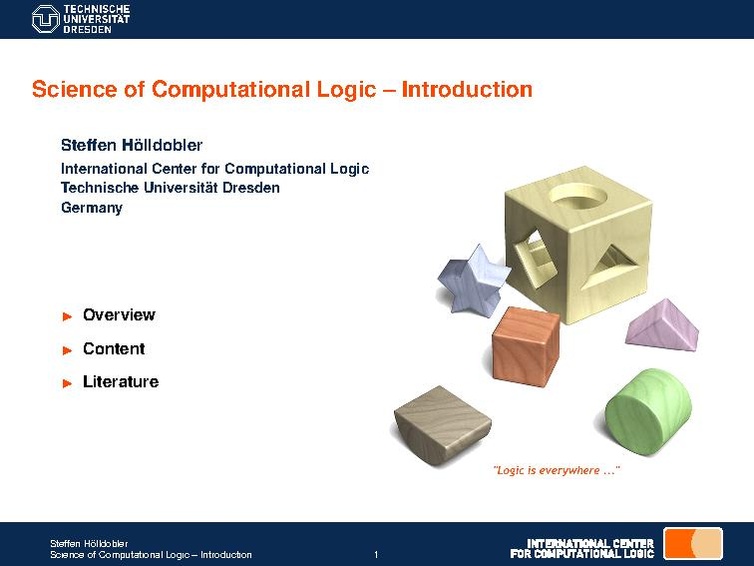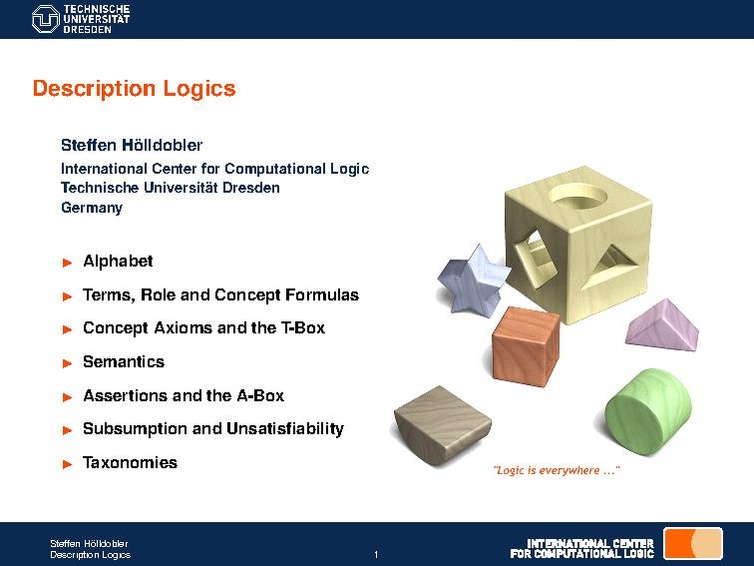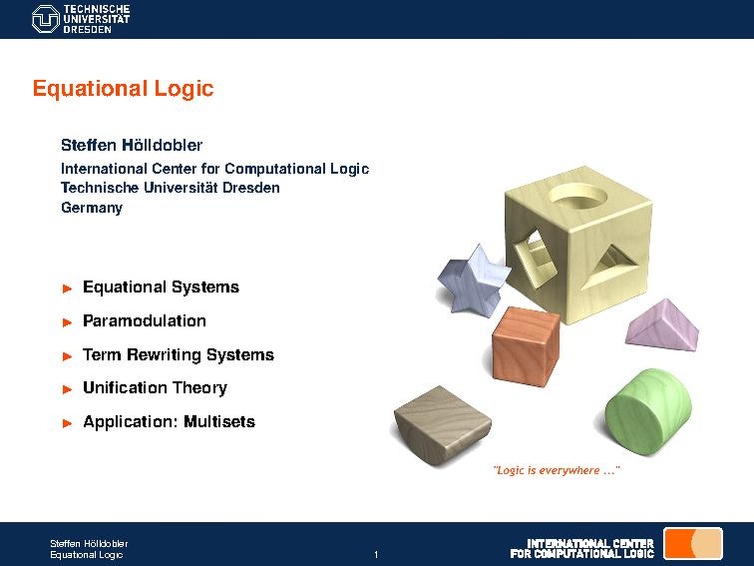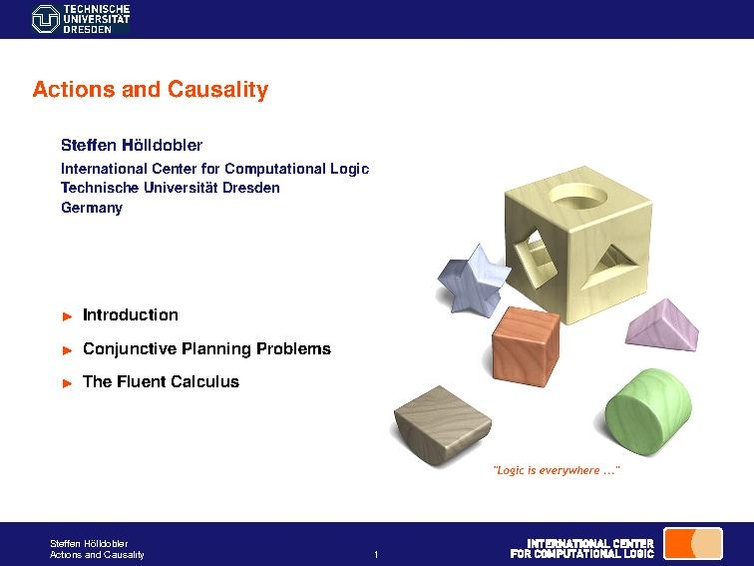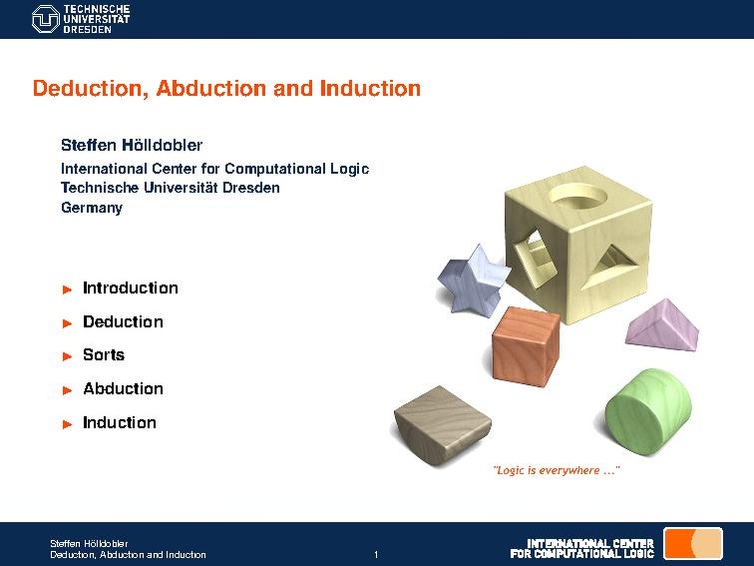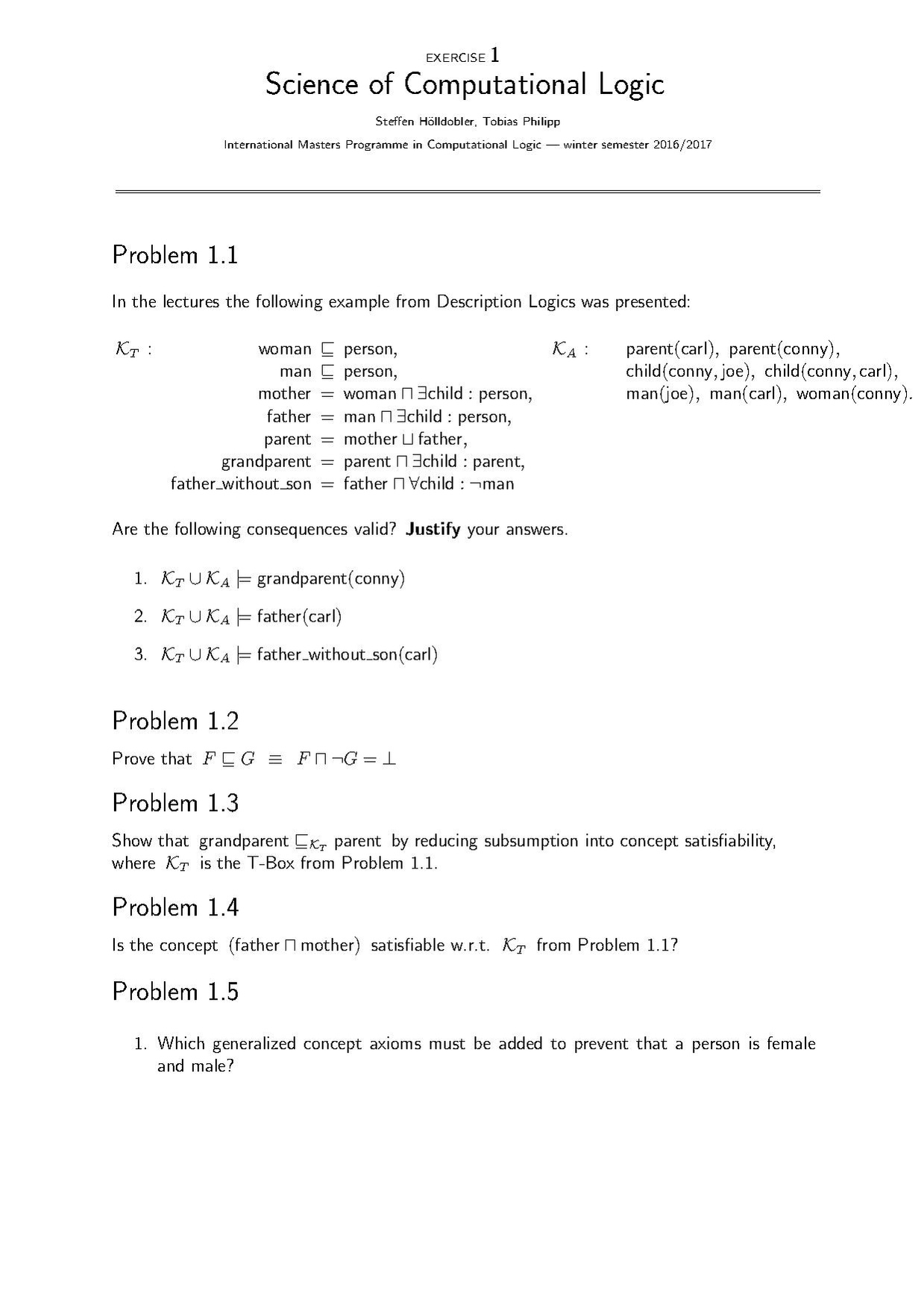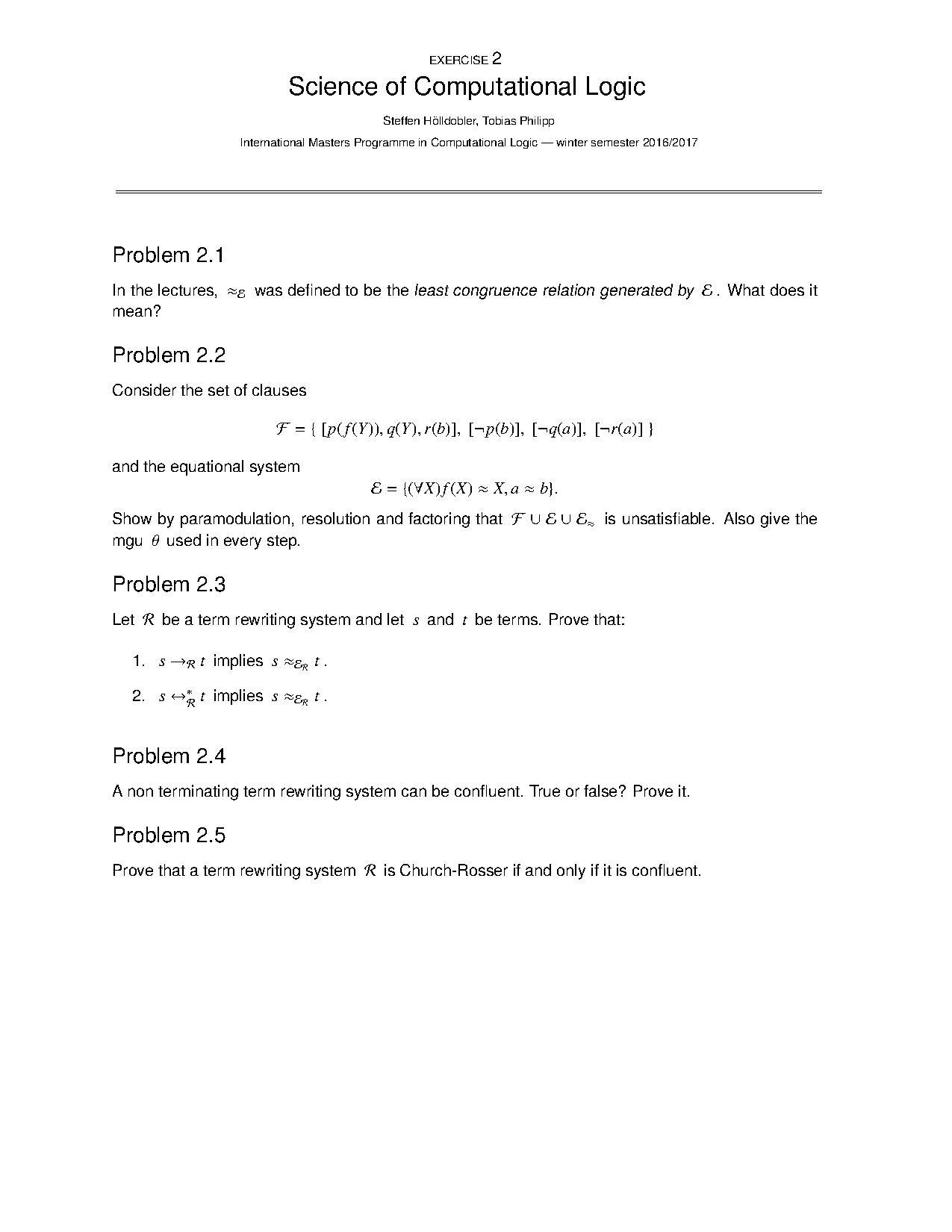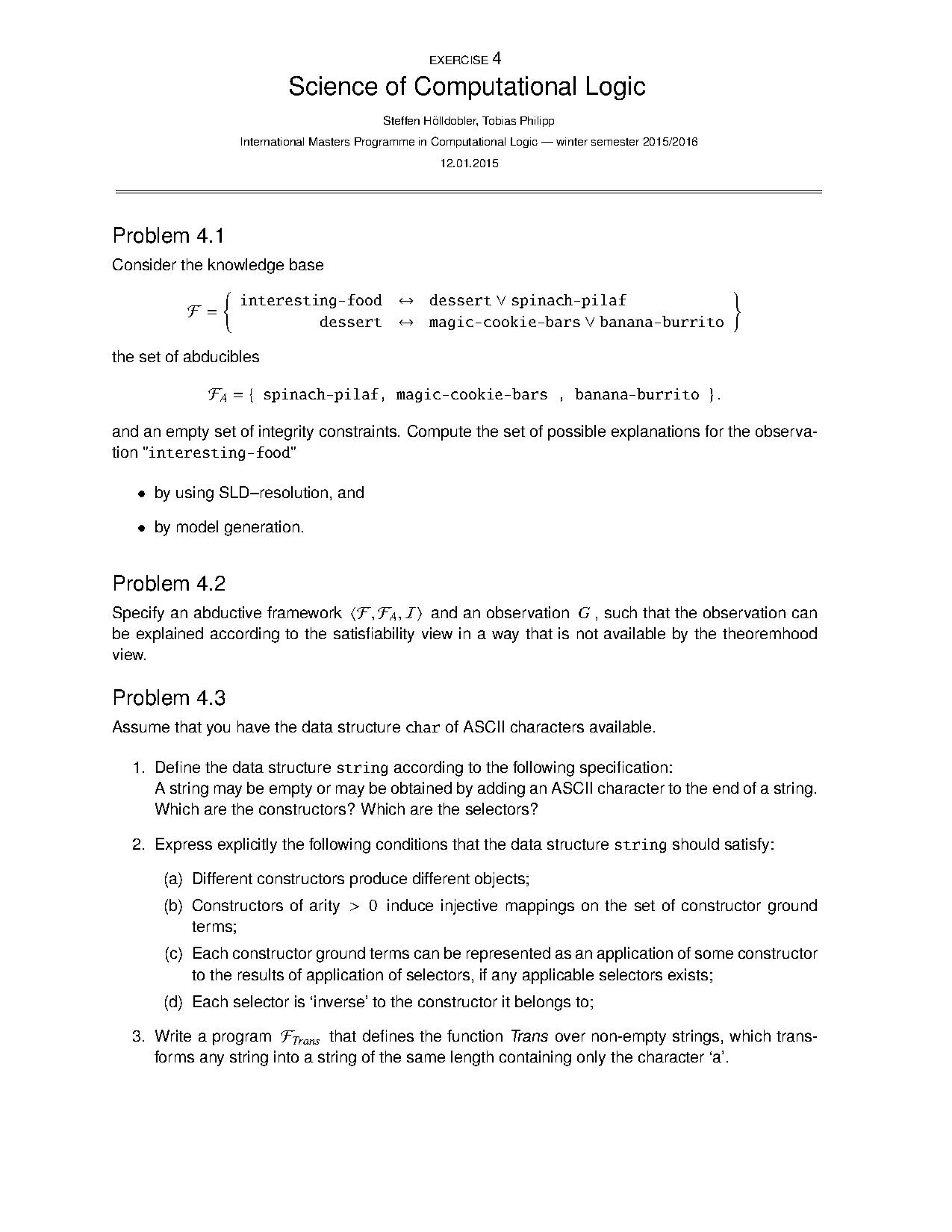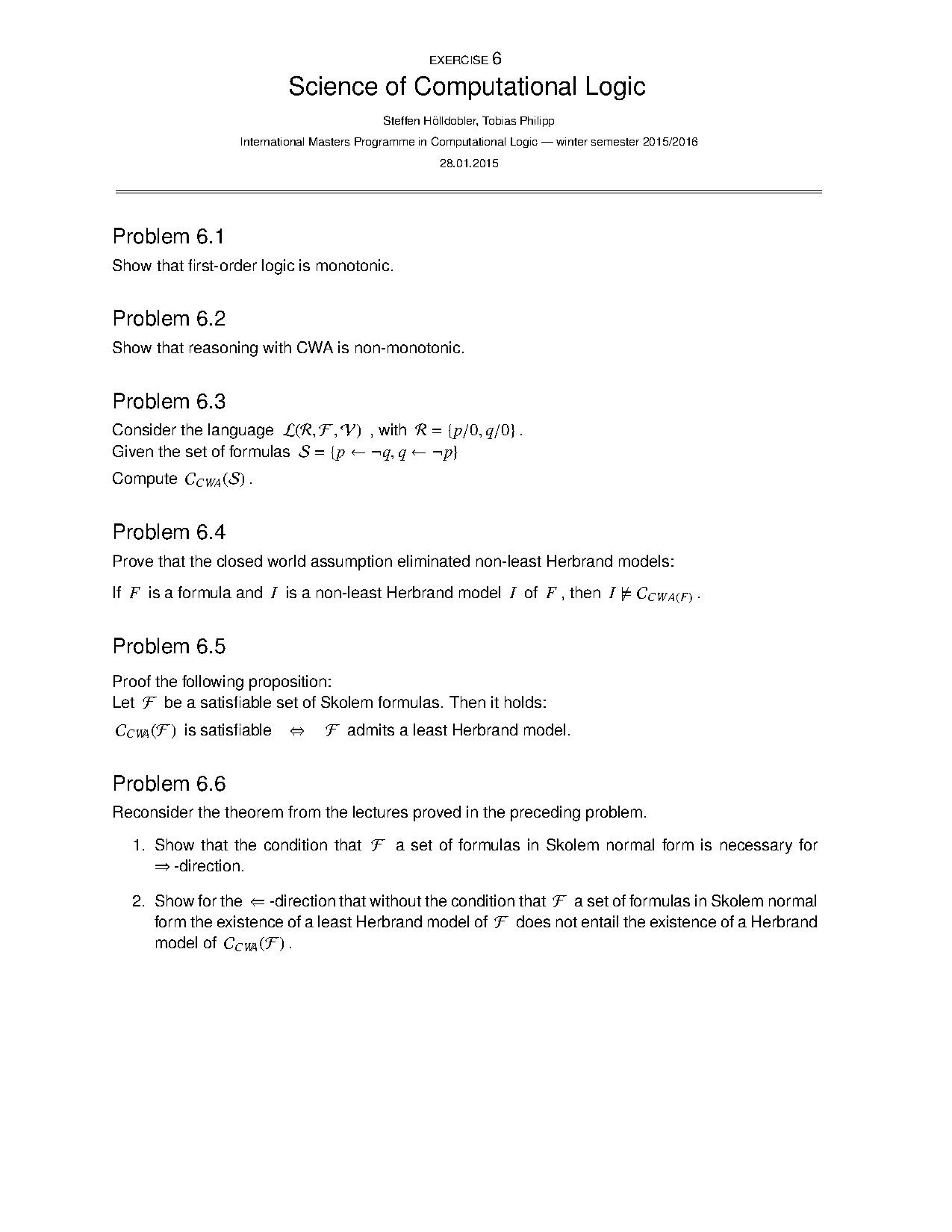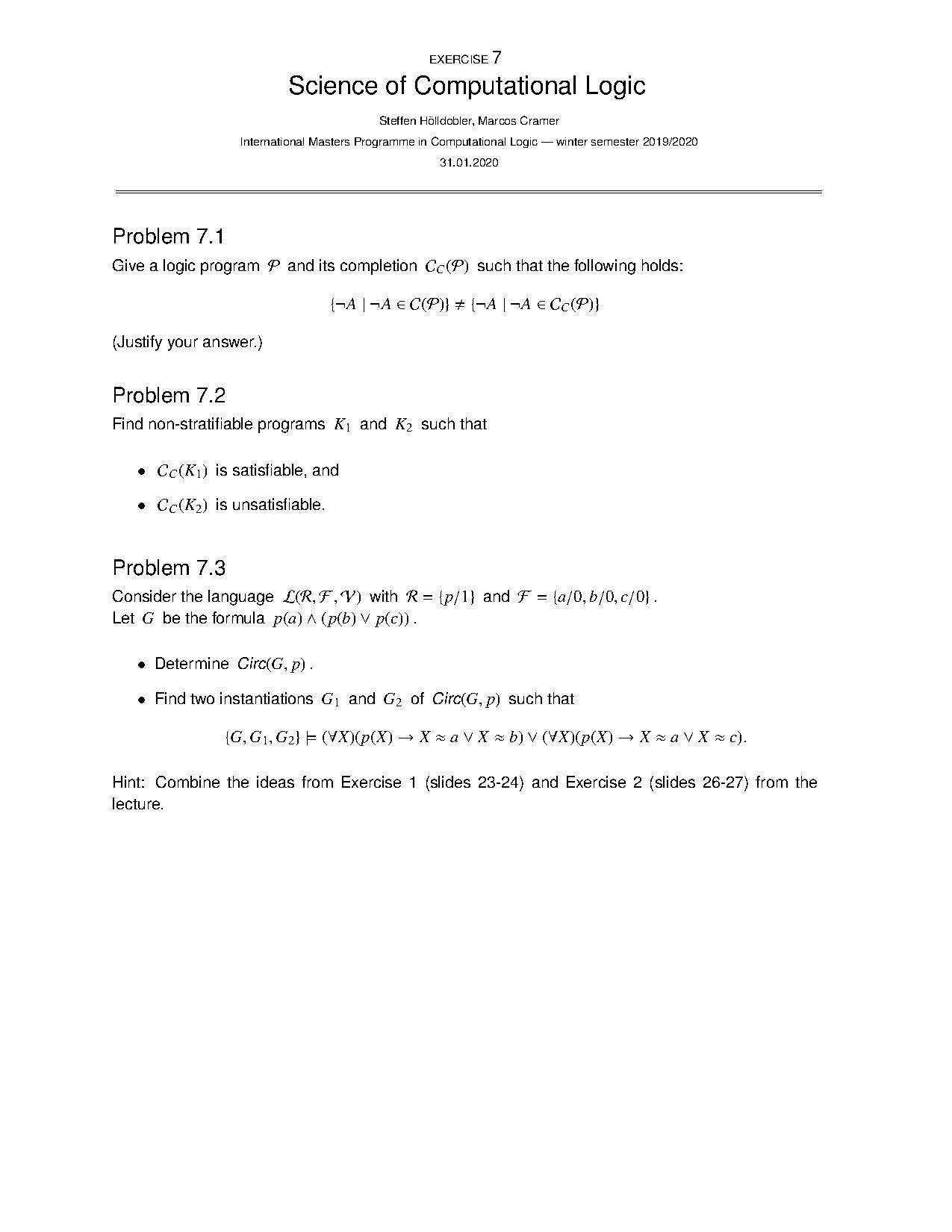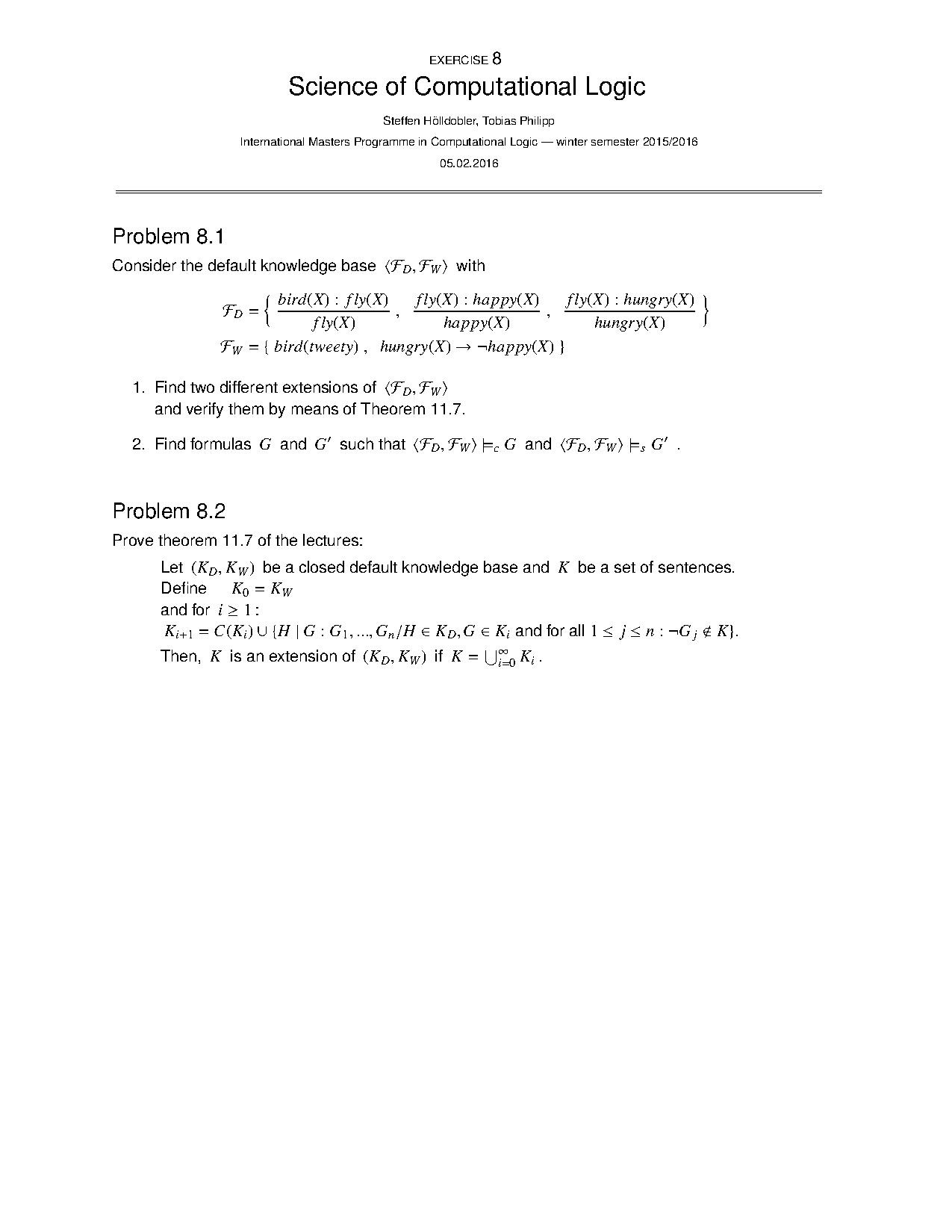Science of Computational Logic
From International Center for Computational Logic
Science of Computational Logic
Course with SWS 2/2/0 (lecture/exercise/practical) in WS 2016
Lecturer
Tutor
SWS
- 2/2/0
Modules
Examination method
- Oral exam
This is the follow-up course to Logic. The course will run with 4 hours of lectures and 4 hours of tutorials per week.
We cover the areas of automated deduction and automated deduction systems, knowledge representation and reasoning, logic-based databases, program development, language design, semantics and verification methods, computational logic and machine learning, computational logic and natural language processing.
News
- The tutorial on Thursday, 15th December is canceled; there will be an additional tutorial on Monday, 19th December, 9:20 in room E05
- The lecture starts on 5th December, and the tutorials on 15th December
Lecture Slides
Exercise Sheets
References
- Description Logics:
- F. Baader. What's new in description logics. Informatik Spektrum, 34(5):434-442, 2011.
- F. Baader, D. Calvanese, D. McGuinness, D. Nardi, and P. Patel-Schneider. The Description Logic Handbook. Cambridge University Press, 2003.
- Paramodulation/Rewriting:
- David A. Plaisted. Equational reasoning and term rewriting system. In D. M. Gabbay, C. J. Hogger and J. A. Robinson, editors, Handbook of Logic in Artificial Intelligence and Logic Programming, volume 1, chapter 5. Oxford University Press, Oxford, 1993.
- Unification Theory:
- F. Baader and W. Snyder. Unification Theory. In J. A. Robinson and A. Voronkov, editors, Handbook of Automated Reasoning. Elsevier Science Publishers B.V., 1999.
- Fluent Calculus:
- S. Hölldobler and J. Schneeberger. A new deductive approach to planning.New Generation Computing, 8:225-244, 1990.
- Abduction:
- R. A. Kowalski. Logic programming in arficial intelligence. In Proceedungs of the International Joint Conference on Artificial Intelligence, 1991.
- A.C. Kakas, R.A. Kowalski and F. Toni. Abductive Logic Programming. Journal of Logic and Computation, 2(6):719-770, 1993.
- Induction:
- C. Walther. Mathematical Induction. In D. M. Gabbay, C. J. Hogger and J. A. Robinson, editors, Handbook of Logic in Artificial Intelligence and Logic Programming, volume 2, pages 127-228. Oxford Science Publications, 1994.
- Default Logic:
- G. Antoniou. A tutorial on default logics. ACM Computing Surveys, 31(4):337-359, 1999.
- Machine Learning:
- Tom M. Mitchell. Machine Learning, McGraw-Hill and MIT Press,1997.
Additional suggestions by Tobias
- N. Dershowitz. Termination of Rewriting. In Journal of Symbolic Computation (1987) 3, 69-116
